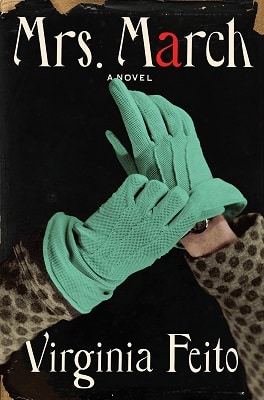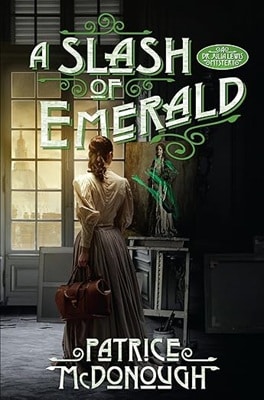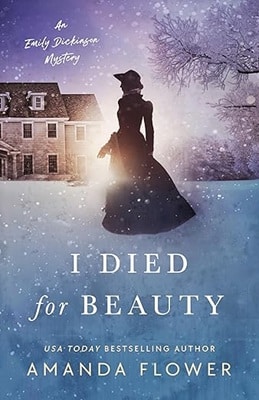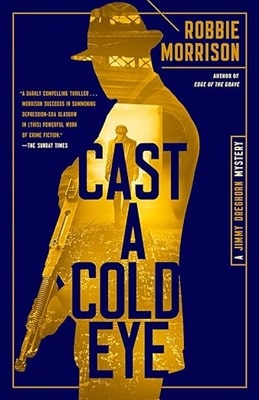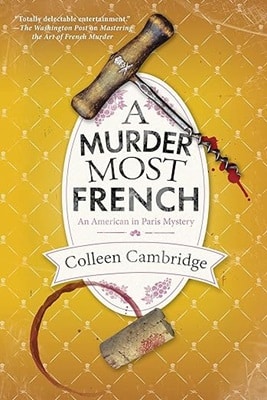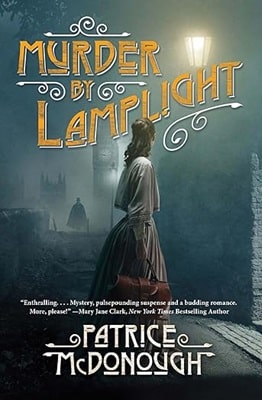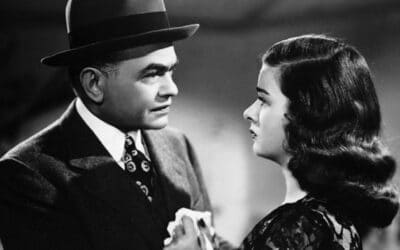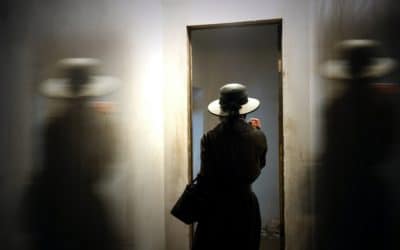Book Review
Mrs. March
reviewed by Barbara Saffer
Mrs. March grew up in an upper-class American home with a cold withholding mother who had little time for her children, especially young Mrs. March. (The protagonist is referred to as Mrs. March throughout the narrative).
The period was the mid-20th century, when well-dressed women wore skirts, pantyhose, and gloves; indoor smoking was acceptable; and men were the breadwinners.
Mrs. March irritated her snobby mother even more when she married George March, a divorced English professor who gave up teaching to become a novelist. Mr. March admitted writing was a chancy profession, but – against all odds – George’s books were popular and he did well. Thus the Marches live in a ritzy apartment on Manhattan’s Upper East Side and employ a full-time housekeeper named Martha, who’s competent but a little intimidating.
Mrs. March is very conscious of appearances and revels in her husband’s success. To celebrate George’s new book, which is a smash hit bestseller, Mrs. March is throwing a cocktail party for the couple’s friends and George’s publication team. Mrs. March goes to her favorite pastry shop to buy macarons for the soirée and the patisserie owner, Patricia, mentions that she likes Mr. March’s new book and that Mrs. March must be proud to have the main character – a homely despised prostitute called Johanna – based on Mrs. March herself.
Mrs. March goes numb, feels her insides liquifying, and gets a pain in her chest. When Mrs. March asks Patricia what she means, the pastry chef observes that Mrs. March and Johanna have similar mannerisms, speech, and dress. Mrs. March is horrified and races from the shop without her purchases, vowing never to return.
Mrs. March doesn’t know whether Patricia’s observations are correct because she hasn’t read the book. But if people believe George’s wife is the model for Johanna, Mrs. March dreads the impending gossip, snickering, and humiliation. If the situation was reversed, Mrs. March would be thrilled to learn unflattering news about someone else, because she’s mean-spirited, spiteful, and envious. In fact, Mrs. March had a child, who’s now eight years old, just to show up Mr. March’s daughter from his first marriage, whom Mrs. March resents.
As Mrs. March contemplates the horror of being linked with Johanna, she fantasizes about buying all the books and destroying them. However, Mrs. March settles for ripping up one copy of the book in George’s study and stealing another from a woman’s shopping cart and throwing it away.
Mrs. March can’t escape the novel. She sees a billboard alluding to it; hears her cocktail party guests tittering about it; gets a phone call asking if she’s Johanna; sees a row of beauty salon patrons reading the book; hears the audiobook being read over speakers in a restaurant bathroom; and more. It’s not clear how much of this is real and how much is Mrs. March’s imagination.
To add to the problem, Mrs. March starts seeing things, like a bloodied woman who looks like herself in an apartment window; a fish on her dinner plate come alive; and cockroaches scurrying across her bathroom floor. Mrs. March is embarrassed to even call an exterminator, because the doorman will see the serviceman going to her apartment.
To top things off, Mrs. March finds a newspaper clipping in George’s notebook, about the body of a missing woman named Sylvia Gibbler being found. It turns out Sylvia was found in Gentry, Maine, where George sometimes goes hunting with his editor. Mrs. March becomes convinced George murdered Sylvia, and sets out to prove it.
The book is an arresting portrait of a woman sliding from neurosis to psychosis, with hints that Mrs. March’s childhood foreshadowed her later descent into madness.
Actress Elisabeth Moss and her production company are making a movie of the book, with Moss playing Mrs. March.
More Historical Mysteries
Historical Mystery Features
Mysteries Set in the 1940s
This tumultuous decade served as a fertile ground for mysteries
Is it Historical Fiction?
How long ago does history start?
History with a Side of Murder
The rules that shape a historical mystery

